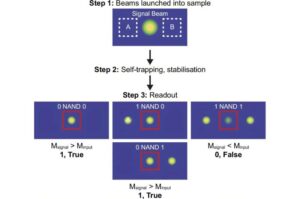
Across Europe, a concerted effort is underway to combat a pressing environmental issue: soil pollution. Recent initiatives have emerged as researchers and citizens work to unveil the hidden contamination that has long been overlooked. From Denmark’s first crisis involving per- and polyfluoroalkyl substances (PFAS) to innovative soil-mapping projects, the continent is learning to recognize and mitigate the dangers posed by this silent threat.
Denmark has become a focal point in this battle against soil contamination, facing its first major PFAS crisis in 2023. These chemical substances, found in numerous consumer products, have been linked to serious health risks, prompting urgent action from both governmental and environmental organizations. The crisis has spurred the Danish government to allocate resources towards identifying and addressing the sources of PFAS contamination, setting a precedent for other nations grappling with similar challenges.
In response to these emerging threats, several European countries are implementing cutting-edge soil mapping initiatives aimed at identifying and quantifying pollution. Countries such as the United Kingdom, France, and Germany are taking significant strides in developing comprehensive databases that track soil health and contamination levels. These efforts are essential for informing policies and ensuring communities are protected from the adverse effects of polluted soil.
One notable project is the European Union’s initiative to establish a standardized soil mapping protocol across member states. This project aims to create a unified approach to assessing soil quality, enabling countries to share data and collaborate on remediation efforts. By utilizing advanced technologies such as satellite imagery and geographic information systems (GIS), scientists are able to pinpoint contaminated sites with greater accuracy than ever before.
Public awareness is also playing a crucial role in this movement. Citizens are becoming increasingly engaged in monitoring their local environments, advocating for transparency and action from authorities. Grassroots organizations have emerged, pushing for stricter regulations and more robust testing protocols to ensure that soil pollution is no longer an invisible threat.
The issue of soil pollution is not merely an environmental concern; it directly impacts public health and safety. Contaminated soil can lead to diminished crop yields, threatening food security and public health. As governments and organizations ramp up their efforts to address these issues, the importance of soil health is becoming more widely recognized.
The urgency of these initiatives is underscored by the growing body of research linking soil pollution to various health problems, including cancers and reproductive issues. According to the Environmental Protection Agency (EPA), exposure to contaminated soil can significantly increase health risks, particularly in vulnerable populations.
As Europe navigates this complex challenge, the collaborative efforts between scientists, citizens, and governments signal a determined approach to tackling soil pollution. By mapping and understanding the extent of contamination, Europe is taking significant steps to ensure a healthier environment for future generations.
In conclusion, the fight against invisible soil pollution is gaining momentum across Europe as a new wave of awareness and action emerges. The combination of government initiatives, public engagement, and scientific advancements presents a holistic approach to a problem that has long been ignored. As these mapping projects continue to evolve, Europe is poised to lead the way in addressing soil contamination and safeguarding public health.







